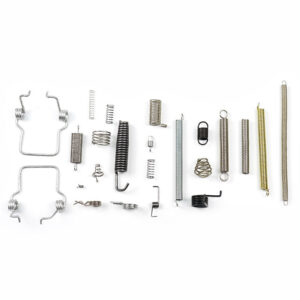Torsion Spring vs Extension Spring: Which One Is Better?
 When it comes to choosing a spring for your project, you might feel overwhelmed by the sheer number of options available. But fear not! Two popular types of springs are torsion springs and extension springs. In this post, we’ll talk about Torsion spring vs Extension spring and help you decide which one is better suited for your needs.
When it comes to choosing a spring for your project, you might feel overwhelmed by the sheer number of options available. But fear not! Two popular types of springs are torsion springs and extension springs. In this post, we’ll talk about Torsion spring vs Extension spring and help you decide which one is better suited for your needs.
What is a Torsion Spring?
A torsion spring is a type of spring that works by twisting. As the spring is twisted, it stores mechanical energy that can be released when the twist is released. Torsion springs are commonly used in applications that require rotating or twisting movement, such as garage doors or hinges.
What is an Extension Spring?
An extension spring, on the other hand, is a type of spring that works by stretching. When the spring is stretched, it stores potential energy that can be released when the tension is released. Extension springs are commonly used in applications that require linear movement, such as trampolines or screen doors.
Strength and Durability
One of the most important factors to consider when choosing a spring is its strength and durability. Both torsion springs and extension springs are strong and durable, but they have different strengths in different areas.
Torsion springs are generally stronger and more durable than extension springs, because they can handle a greater amount of torque. Torsion springs are often made from materials like stainless steel or high-carbon steel, which are known for their durability and resistance to corrosion.
Extension springs, on the other hand, are more flexible than torsion springs, but they are also more prone to wear and tear. Extension springs are often made from materials like music wire or hard drawn wire, which are less durable than the materials used for torsion springs.
Size and Shape
Another important factor to consider when choosing a spring is its size and shape. Both torsion springs and extension springs come in a variety of sizes and shapes, and the right choice will depend on your specific needs.
Torsion springs are often more compact than extension springs, because they can store more energy in a smaller area. This makes them a good choice for applications where space is limited, such as in small equipment.
Extension springs, on the other hand, are often longer and more slender than torsion springs, because they need to stretch to store energy. This makes them a good choice for applications where space is not limited, such as in large equipment.
Ease of Use
The ease of use is another important factor to consider when choosing a spring. Both torsion springs and extension springs are easy to use, but they have different application methods.
Torsion springs are often used in applications where they can be mounted to a shaft or rod, and the torque can be adjusted by twisting the spring. This makes them a good choice for applications where precise control over the force is needed, such as in machinery.
Extension springs, on the other hand, are often used in applications where they can be attached to two points and stretched to store energy. This makes them a good choice for applications where ease of use is more important than precise force control, such as in toys or decorations.
Conclusion
In conclusion, both torsion springs and extension springs have their own unique strengths and weaknesses, and the right choice will depend on your specific needs. Torsion springs are stronger and more durable, and they are a good choice for applications that require torque or limited space. Extension springs are more flexible and easier to use, and they are a good choice for applications that require linear movement or ease of use. Whatever your needs, there is a spring that is right for you!






